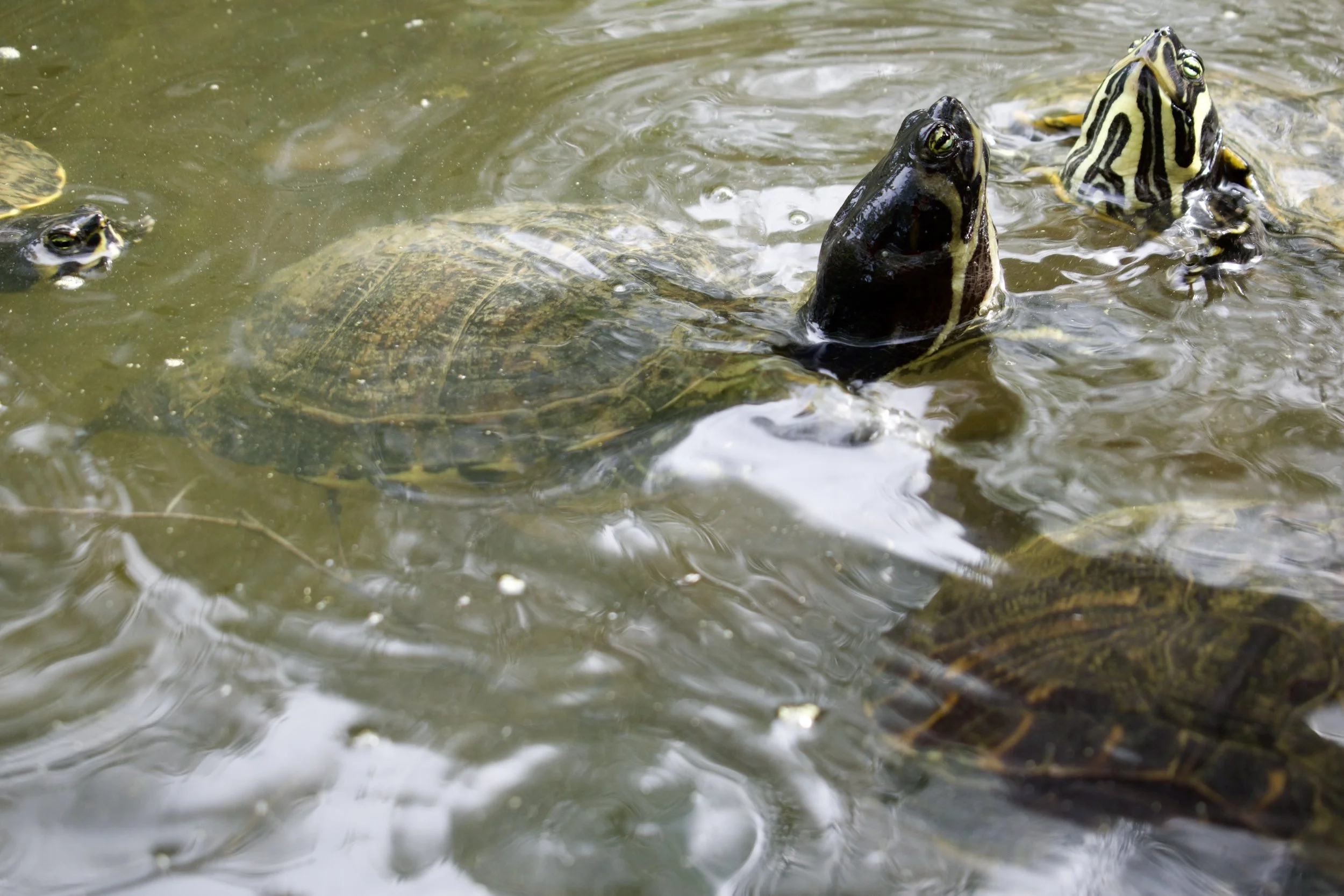The Secrets of Turtle Pond
By Harper Purcell
The Secrets of turtle pond
Are you looking for a new study spot packed with shade, water features, history, and lovable friends? Search no further than the newly upgraded Turtle Pond!
By third year Harper Purcell
I, like many other college students, am often on the hunt for new places to study, relax, or visit with friends on UGA’s campus. While the iconic North Campus provides many fantastic spots, it often overshadows the beautiful yet hidden gems located just south. I stumbled across one of these gems this summer, while I was finding my classes for the upcoming semester.
Mary Kahrs Warnell garden’s pond (more commonly known as Turtle Pond) is the perfect hideaway. This shady, picturesque spot is on South Campus, just outside of Warnell Hall. It is only a 15 minute walk from Tate, but just out of the way enough that there is not a heavy load of foot traffic. I, like many other students not a part of UGA’s School of Forestry, had heard tales of this pond, but had not laid eyes on it myself.
The pictures and stories simply do not do it justice. With its beautiful stone construction, peaceful atmosphere, and breezy location, Turtle Pond is a most ideal place for the sunbathers and animal lovers alike. However, this enchanted garden has more history than meets the eye. Though not new, the pond has been undergoing some renovations for the betterment of its inhabitants. As stated in both educational signage next to the pond as well as on the Warnell School of Forestry and Natural Resources Website, Turtle Pond gets periodic cleanings when the environment gets too overgrown, wherein the water is entirely drained and the perimeter pressure washed. The project took an unexpected turn, however, upon the discovery of several turtles nonnative to the pond. Some of these strange turtles are suspected to have been former pets that were released by owners who could no longer provide the necessary living environment for the turtle to thrive.
While this seems like a helpful thing to do in theory, the presence of these once-pets provided an unintentional threat to the small, controlled ecosystem. There were reportedly 19 turtles pulled, with only five being intentionally placed. Since this discovery, there has been a push to warn those who are thinking of getting a turtle for a pet. On Warnell’s Website, it is stated that turtles, like any animal, are a significant amount of work, and live for quite a while. Releasing nonnative turtles is similar to introducing any new animal or plant into a foreign ecosystem. Along with a threat of disease, doing this can cause hybridization of the pre-existing species, which can heavily affect the environment. So think twice before deciding that Turtle Pond needs more reptilian friends.
As of this fall, the native turtles have been tagged and placed back in the pond for all to enjoy! The School has stated they will keep a close eye on our newly tagged friends, as well as be on a diligent look-out for any intruders. And, should you choose this as your personal study nook, you can too! While it is important not to feed the turtles “people food”, due to the many health concerns it can cause, there is sometimes turtle-friendly food available inside Warnell that students can ask about.
Beyond its beautiful landscape, Turtle Pond is full of rich history and many learning opportunities. If you have yet to step foot in this garden, I highly recommend it! Remember to clean up after yourself, take lots of pictures, and say hi to the friendly reptilian swimmers!

